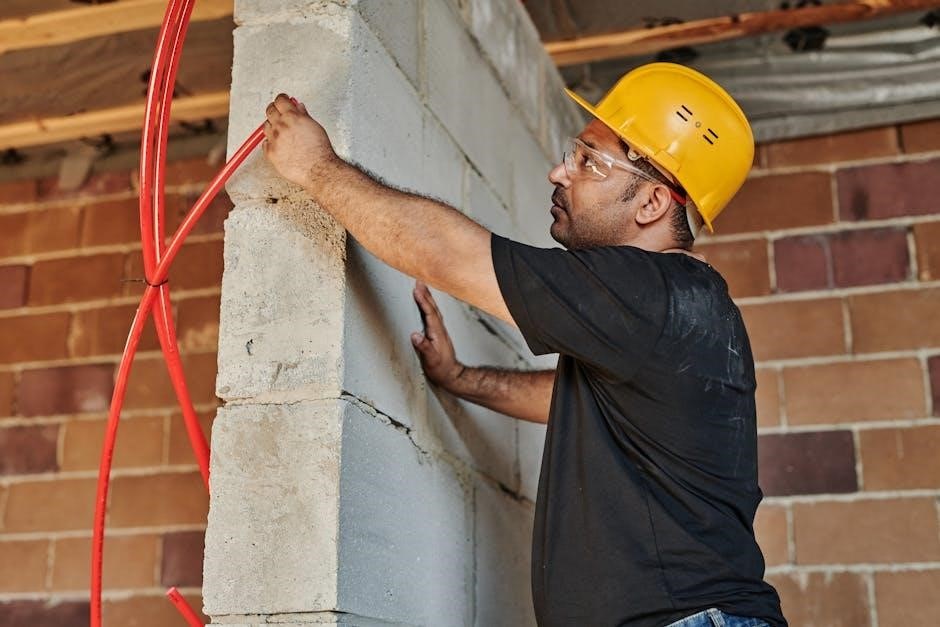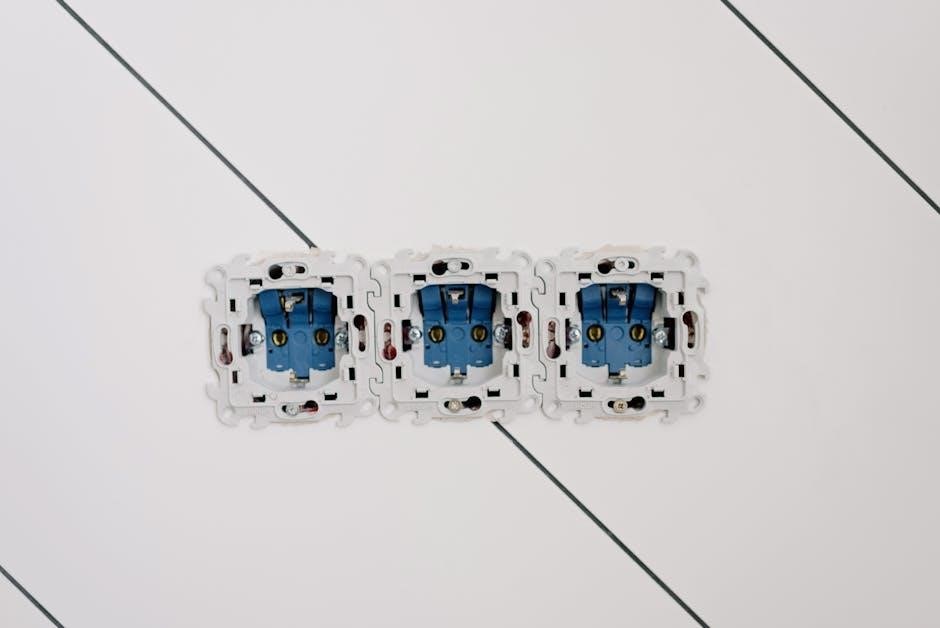frigidaire lp conversion kit instructions
Frigidaire LP conversion kit instructions provide guidance on converting gas ranges to LP gas, ensuring safe and proper installation with clear step-by-step procedures always.
Understanding the Importance of Conversion Kits
Conversion kits play a crucial role in enabling gas ranges to operate with different types of fuel, such as LP gas, which is commonly used in areas where natural gas is not available; The Frigidaire LP conversion kit is designed to facilitate this process, ensuring a safe and efficient transition. By using a conversion kit, users can adapt their gas ranges to run on LP gas, which is often more convenient and cost-effective. This is particularly important for individuals living in rural areas or those who prefer to use LP gas for their cooking needs. The conversion kit includes necessary components, such as orifices and instructions, to complete the conversion process, making it a vital component for gas range owners who want to switch to LP gas. The kit is easy to install and use, making it a practical solution for many users.
Overview of Frigidaire LP Conversion Kit
Frigidaire LP conversion kit includes components for safe conversion to LP gas with easy installation procedures always available online.
Kit Components and Compatibility
The Frigidaire LP conversion kit includes various components such as orifices, regulators, and valves, designed to ensure a safe and proper conversion to LP gas. The kit is compatible with specific Frigidaire gas range models, including those with the prefixes FC, GC, and PC. It is essential to verify the compatibility of the kit with the specific gas range model to ensure a successful conversion. The kit components are designed to work together to provide a reliable and efficient conversion to LP gas. The kit also includes instructions and guidelines for installation, which must be followed carefully to ensure a safe and proper conversion. The compatibility of the kit with the gas range model is crucial to ensure a successful conversion and to prevent any potential safety hazards. The kit is designed to meet the specific needs of Frigidaire gas range owners who require a conversion to LP gas.
Pre-Installation Checklist
Review the manual and gather necessary tools and materials before starting the installation process always.
Reviewing Instructions and Safety Precautions
It is essential to carefully review the instructions and safety precautions provided with the Frigidaire LP conversion kit to ensure a safe and successful installation. The manual should be read thoroughly, and all warnings and cautions should be noted. The installer should also be familiar with the local gas codes and regulations. A gas leak detector fluid or soapy water should be used to check for leaks after installation. The range should be plugged in and the gas supply turned on to test for leaks. By following the instructions and taking the necessary safety precautions, the risk of accidents and injuries can be minimized, and the installation can be completed efficiently and effectively, resulting in a safe and properly functioning gas range. The instructions should be followed carefully to avoid any mistakes.
Installation Process for Frigidaire LP Conversion Kit
Installation involves replacing orifices and regulators with LP conversion kit components always carefully.
Step-by-Step Guide to Converting to LP Gas
A step-by-step guide to converting to LP gas involves careful planning and execution, starting with gathering the necessary tools and components, including the Frigidaire LP conversion kit. The kit usually includes instructions and replacement parts, such as orifices and regulators. It is essential to follow the manufacturer’s instructions and take safety precautions to avoid accidents. The process typically begins with shutting off the gas supply and disconnecting the range from the power source. Then, the user must locate the gas valves and orifices, which need to be replaced with the LP conversion kit components. The user should also inspect the gas lines and connections for any signs of damage or wear. By following the step-by-step guide, users can ensure a safe and successful conversion to LP gas. The guide is usually provided with the conversion kit and is specific to the Frigidaire model.
Troubleshooting Common Issues
Troubleshooting involves identifying and resolving issues like leaks and incorrect installations with Frigidaire LP conversion kits always following instructions carefully online.
Identifying and Resolving Leaks and Other Problems
To identify leaks, use a gas leak detector fluid or soapy water to coat valves, joints, and hoses, then check for bubbles, following the Frigidaire LP conversion kit instructions carefully.
The kit includes a manual with troubleshooting tips and guides for resolving common issues, such as incorrect installations or faulty components.
By following these steps, you can ensure safe and proper operation of your gas range, and resolve any problems that may arise during or after the conversion process, always referring to the instructions and manufacturer’s guidelines for guidance and support, using online resources and customer support services if needed, to complete the conversion successfully and safely.
Post-Installation Checks and Tests
Verify the Frigidaire range is operating safely with LP gas after installation and testing procedures are completed successfully always.
Verifying Safe Operation and Performance
To ensure the Frigidaire range is operating safely and efficiently, verify that all connections are secure and leak-free using a gas leak detector fluid or soapy water. Check the range’s burners and igniters to ensure they are functioning properly and producing a stable flame. Additionally, review the range’s performance and adjust the burner orifices as needed to achieve optimal flame characteristics. It is also important to consult the user manual and follow the manufacturer’s instructions for testing and verifying the range’s safe operation. By following these steps, you can ensure that your Frigidaire range is operating safely and efficiently on LP gas, and provide a safe cooking environment for you and your family. The verification process is crucial to prevent any potential hazards or performance issues. Proper verification ensures optimal range performance always and safely.
and Final Thoughts
Frigidaire LP conversion kit instructions are essential for successful installation with proper safety precautions always in place and followed correctly online.
Importance of Following Instructions and Safety Guidelines
The importance of following instructions and safety guidelines when installing a Frigidaire LP conversion kit cannot be overstated, as it ensures a safe and successful installation process with minimal risks. By carefully reading and adhering to the instructions provided, individuals can avoid common mistakes and potential hazards, such as gas leaks or improper connections. The instructions typically include a list of necessary tools and materials, as well as step-by-step procedures for completing the conversion. Additionally, the safety guidelines outline important precautions to take during the installation process, such as turning off the gas supply and ensuring proper ventilation. Following these guidelines is crucial to preventing accidents and ensuring the safe operation of the gas range. Overall, careful attention to instructions and safety guidelines is essential for a successful and safe Frigidaire LP conversion kit installation, and should always be prioritized.














